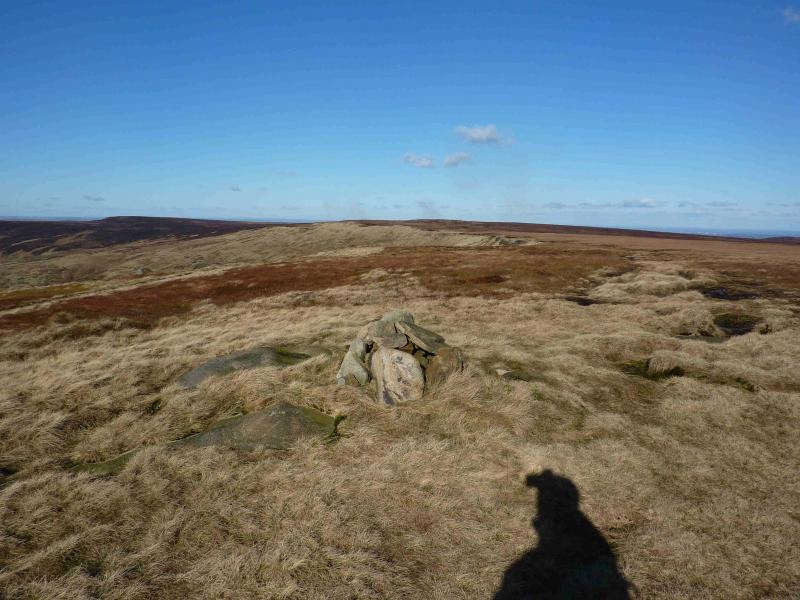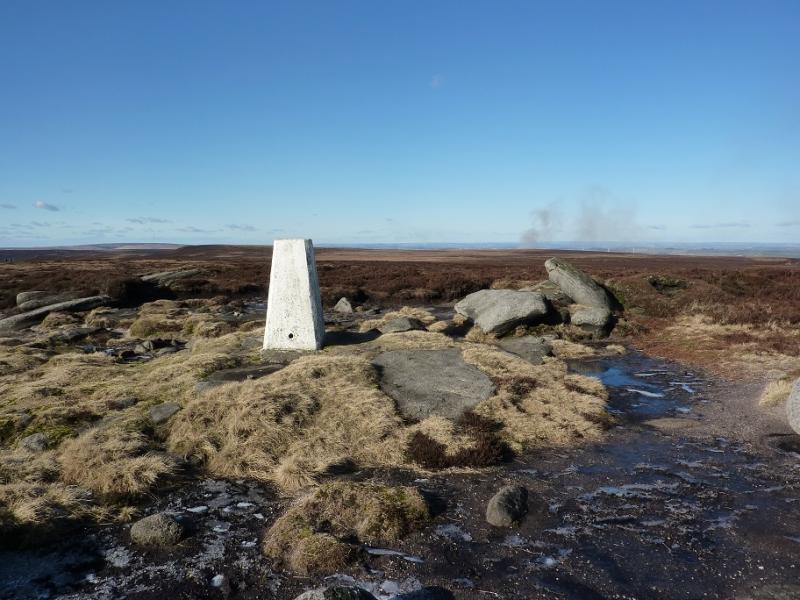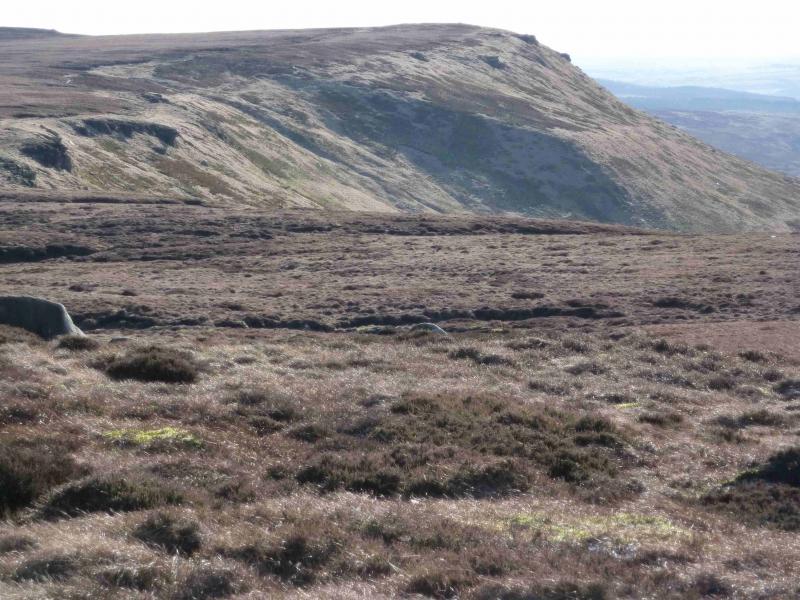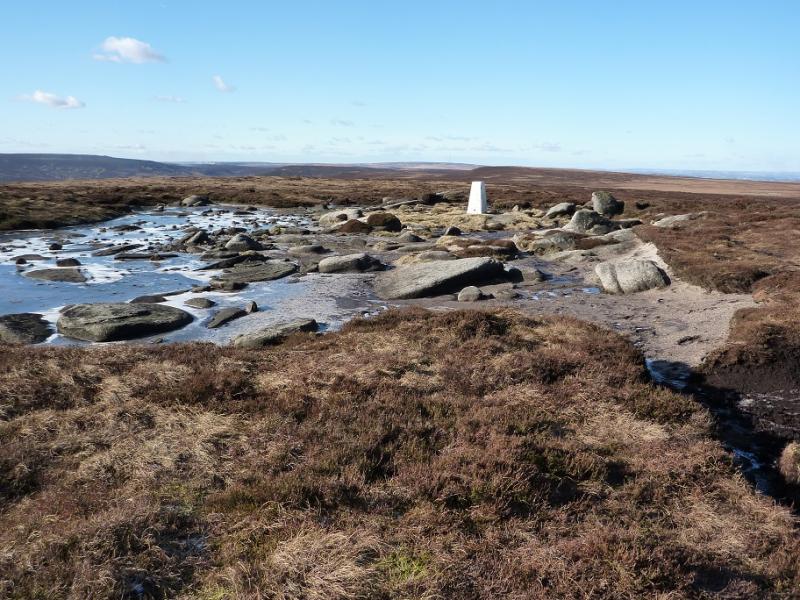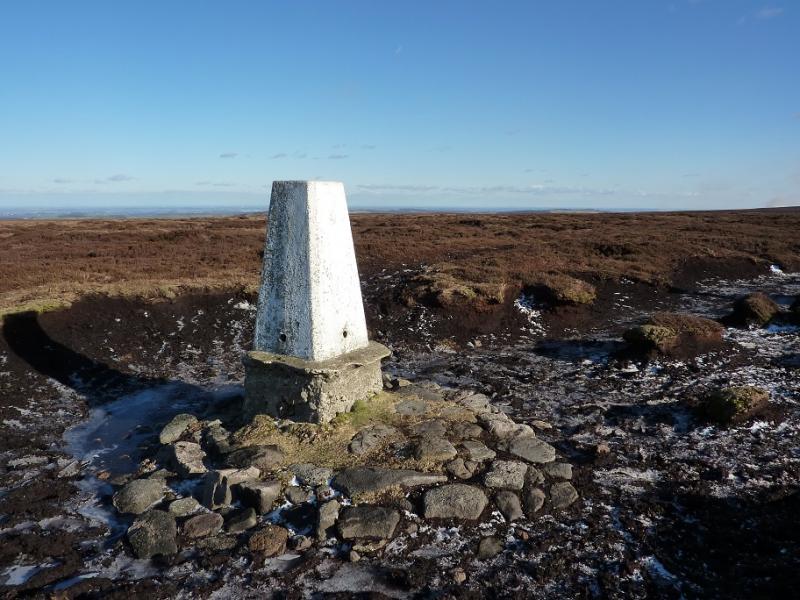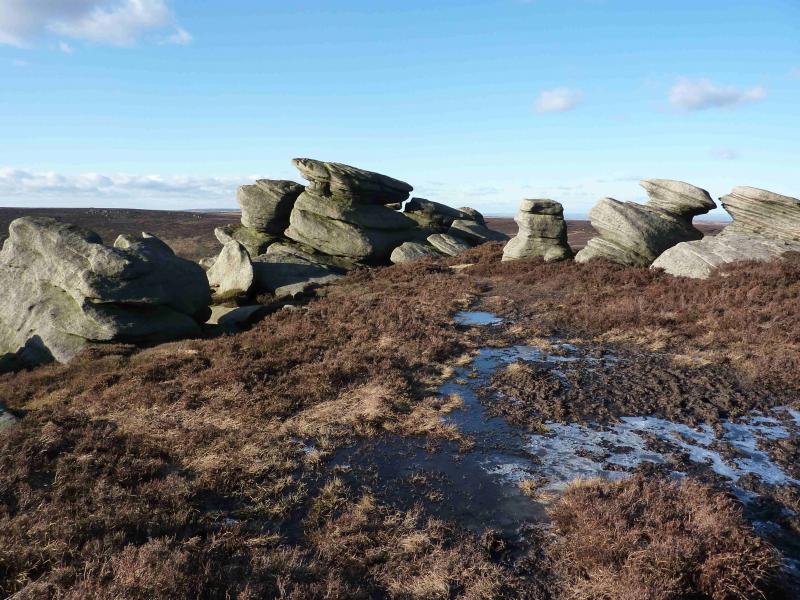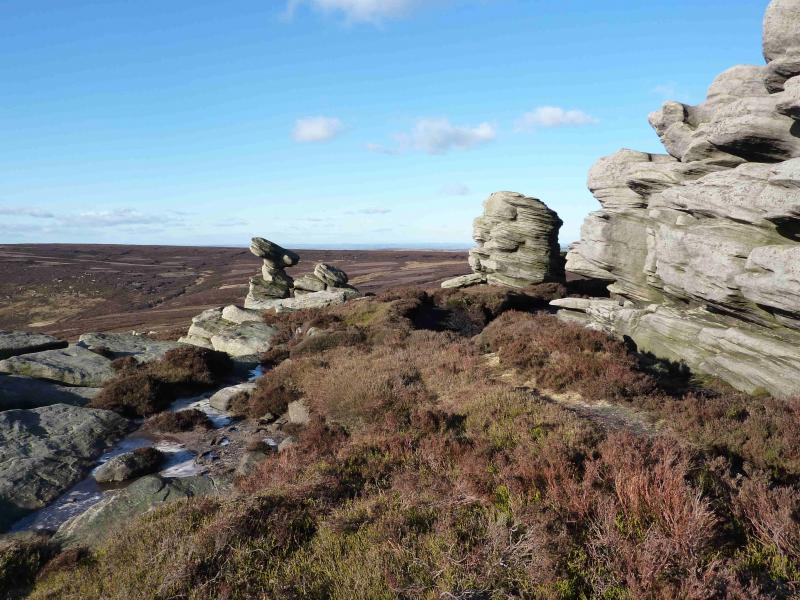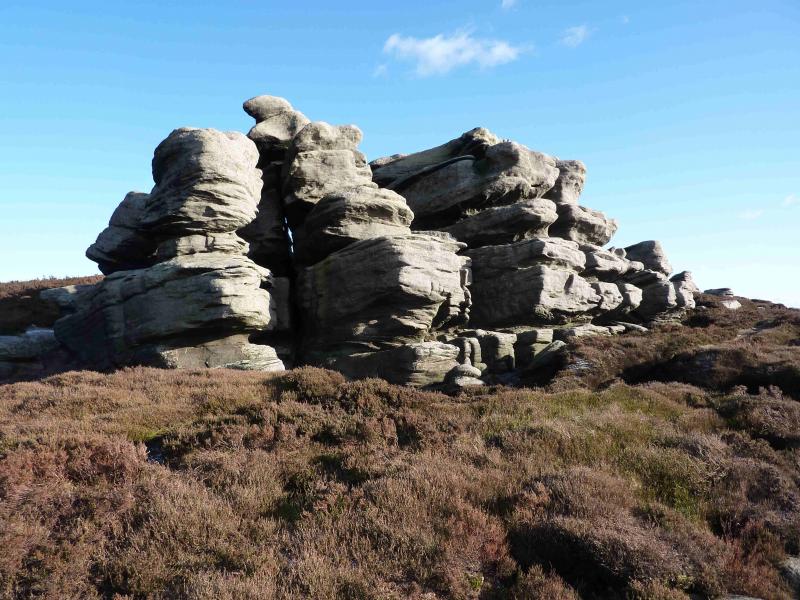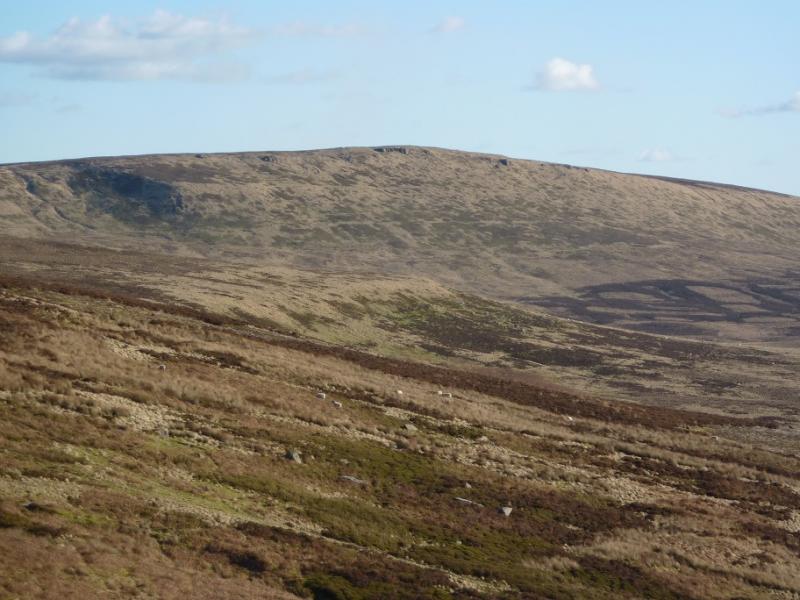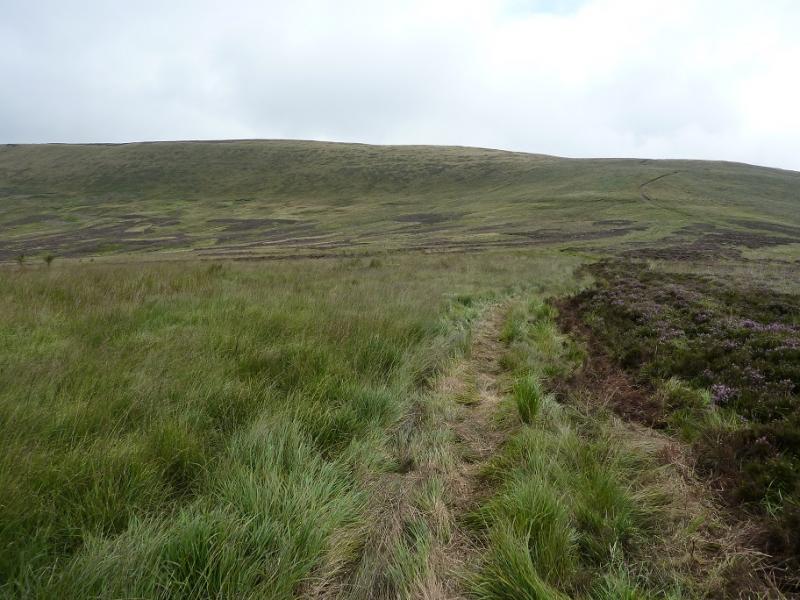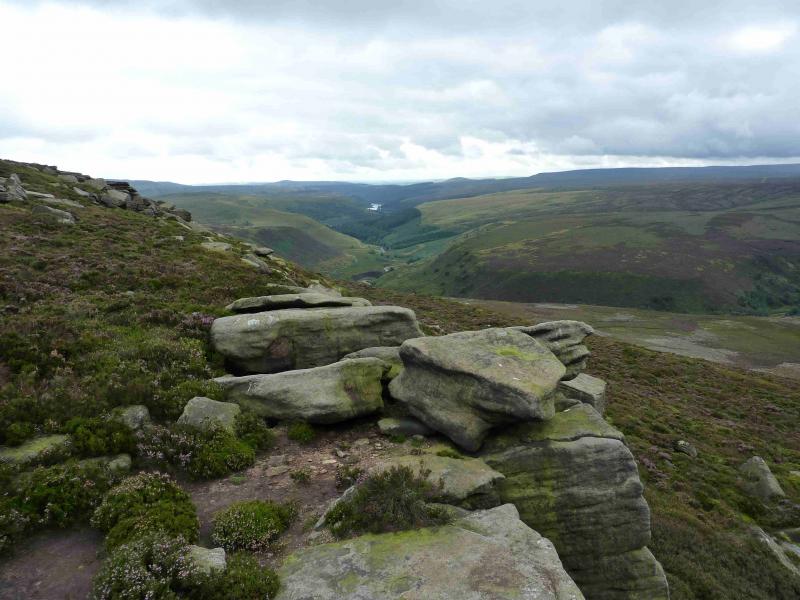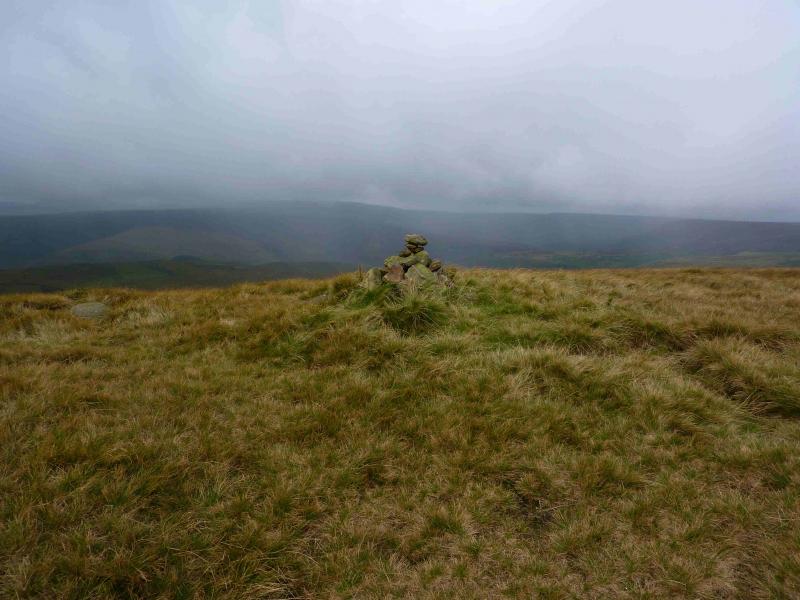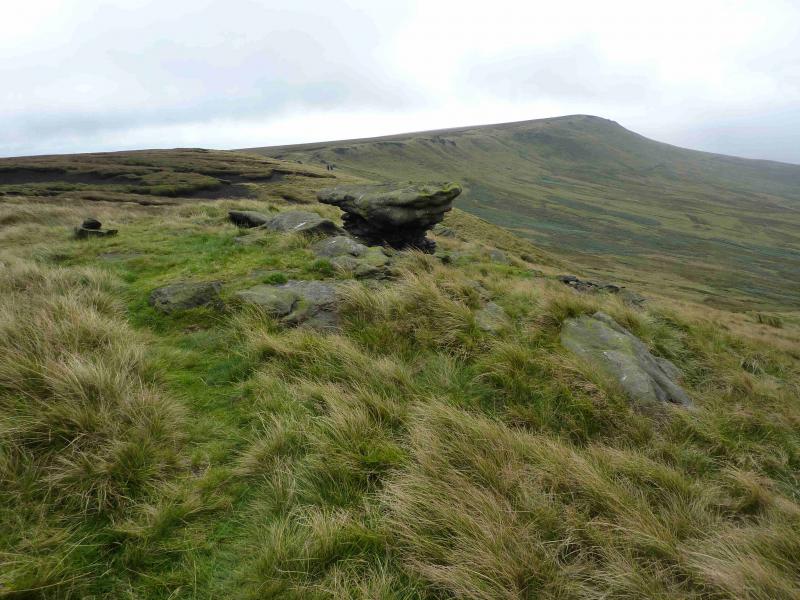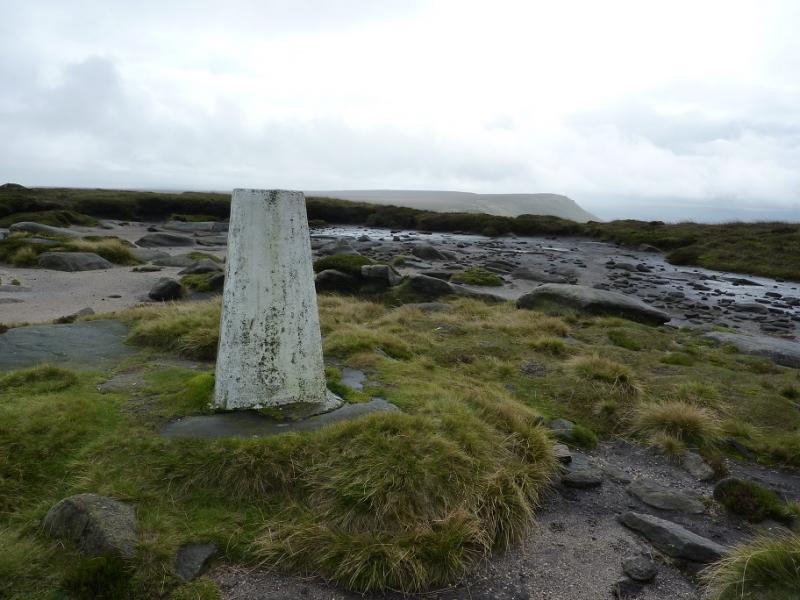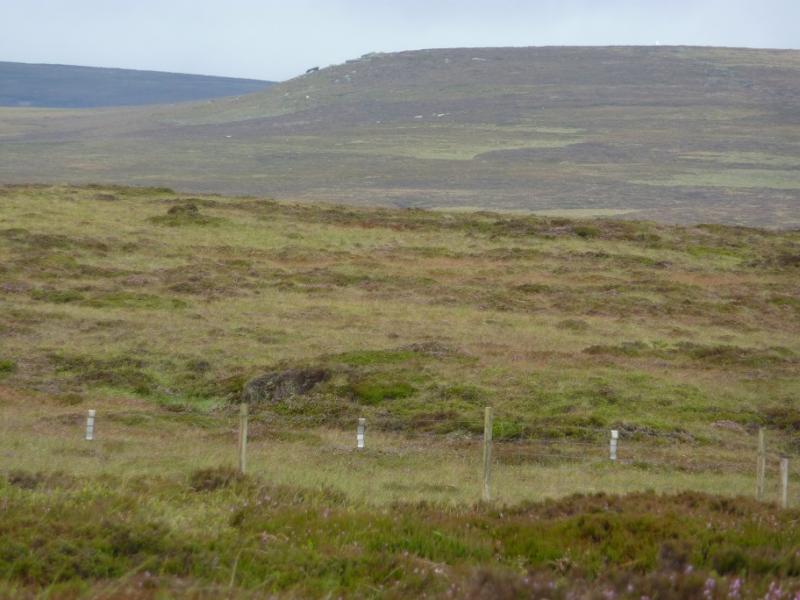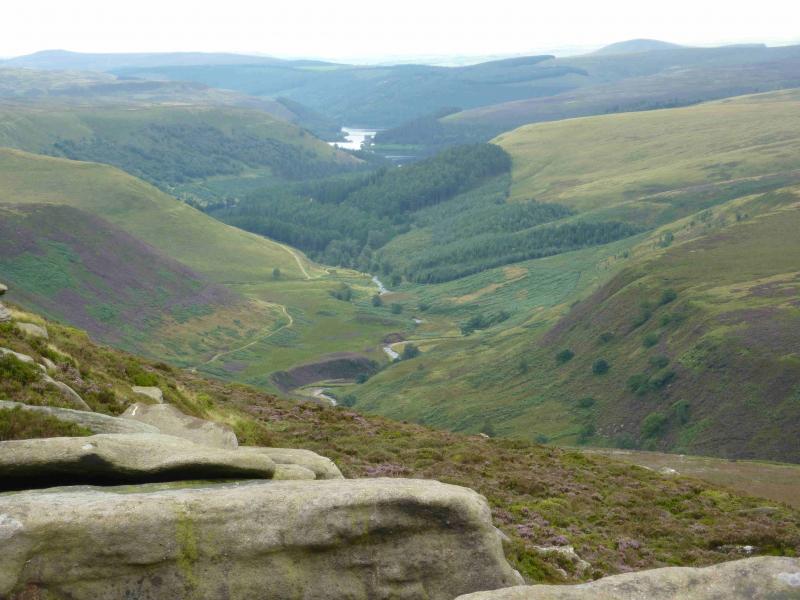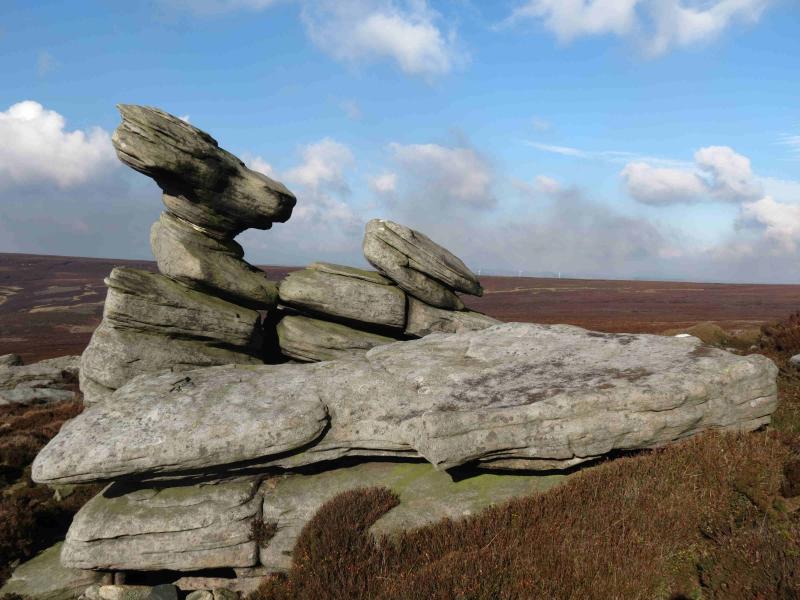Get Lost Mountaineering
You are here: England » Peak District » Bleaklow, Alport, Derwent Edge & Howden Edge from Derwent Valley
Howden Edge, Margery Hill, Outer Edge & Crow Stones
Howden Edge, Margery Hill, Outer Edge & Crow Stones
from Fairholmes Car Park, Derwent Dam
Start/Finish
Fairholmes car park just to the S of the Derwent Dam. This is about 2 miles up the minor road, from the bottom of the A57 (Snake Pass), on the W side of the Ladybower Viaduct which crosses the northern arm of Ladybower Reservoir. In winter, this road is often untreated and it can be quite hazardous under snow and ice. The A57 is usually gritted but it does not take much wintry weather to close the Snake Pass at its highest point, beyond the Snake Inn.. It is expensive to park in this car park but there are good facilities, including toilets, snack bar, gift shop and ranger service. Free parking is available on the minor road, some within a few hundred metres of Fairholmes. On Sundays, the minor road is closed beyond Fairholmes but a regular bus service runs to the end of the road. It is possible to use the bus service to avoid the 5 km walk back along the cycle track on the east side of the Howden and Derwent reservoirs. However, the service can be unreliable so check before setting off as the bus runs along the west side of the reservoirs which is a much longer walking route if the bus is not running.
Distance/Time
18 km About 6 - 7 hours
Peaks
High Stones, 548 m, SK 188 943.
Margery Hill, 546 m, SK 188 967.
Outer Edge, 541 m, SK 177 969. OS Outdoor Leisure 1: Dark Peak
Introduction
This is a good but strenuous ridge walk with excellent views in clear weather. Some of the going is boggy and gaiters are recommended in a wet spell. There is plenty of time for this walk on a late-winter's day when the views are often at their best and the frozen ground is more pleasant to walk over. Snow and ice are not normally a problem but err on the side of caution if you have any doubts. The steepest section is on parts of the ascent from the Derwent Valley to the Howden Edge but this is on a mainly good track.. The ridge itself has the gentlest of gradients. There are some outcrops on the ridge but not on the scale of the Derwent Edge. Crow Stones (below Outer Edge) is one of the finest outcrops in the area.
Route
(1) From the car park, walk N towards the Derwent Dam, on a minor road. Cross the road bridge then soon leave the road and follow the obvious path across the grassy area below the Derwent Dam. Climb up the steps and emerge on a good track. Turn left, N, and follow the track for just over 2 km to reach the short inlet just before the Howden Dam. There is a long curved stone bridge across the stream flowing into the inlet. Continue for just over 100 m past the bridge then take the track on the right, a reverse fork, which climbs fairly steeply. Follow the track up through some gates and through the wood to emerge on open moorland. Follow the track which soon deteriorates and becomes slightly boggy before curving around to the east to join a better track which ascends, fairly steeply, on to the Howden Edge. Once on the edge, there is a grouse butt. Leave the track here and follow the path (not that obvious) along the edge, heading N. Soon some grouse boards (single fence panels) are passed and soon a small cairn is reached which is High Stones, 548 m, which is the highest point on the Howden Edge.
(2) Continue ahead on the path along the edge and descend into a shallow dip. Soon the path splits. Either stay on the edge then turn right later on, by the fence, or take the right fork which leads to Margery Stones, a small but significant outcrop of, essentially, two large rocks. About 50 m further is the trig point of Margery Hill, 546 m, which sits in a flat and wet boggy area although it is quite easy to reach the trig point. On a clear day, one can see the Holme Moss mast (slightly left) and the Emley Moor mast (slightly right).
(3) Descend roughly NW to a stile ( the tird stile from the summit going towards the Howden Edge gives probably the best path) then continue, on very boggy ground, following a path to reach Cut Gate which is a crossroads of paths. Go straight on, following the boggy path. There is a gentle descent then an equally gentle ascent which leads to the Outer Edge trig point, 541 m. As one approaches the shallow col between Margery Hill and Outer Edge, some strange “cairns” are seen on the skyline to the right of Outer Edge. These are actually isolated trees! A drier, but rougher, route between the two hills is to look for some short white marker posts on the right, E. These also have low cairns near them and can be followed until close the the summit of Outer Edge.
(4) In clear weather the Crow Stones lie slightly N of W and about 800 m away. Descend Outer Edge but drift left of the direct line to pick up a path down the edge which then heads across the flatter area towards the Crow Stones. This path is faint in places but leads to Crow Stones which is a very fine outcrop indeed with many good examples of rocks sculpted by the wind and rain. There are numerous places to shelter amongst the stones. One of the rocks looks like a much larger version of the Salt Cellar on the Derwent Edge.
(5) Walk roughly S/SE along Crow Stone Edge on an obvious but boggy path. Keep looking to the right and soon find a narrower path heading in roughly the same direction but slightly lower. Follow this and gradually drop down lower to the right. Unfortunately, the path becomes faint and is replaced by quite a few animal tracks. One is aiming for the grouse butts to the N of the upper part of Broadhead Clough. These are at approximately SK 175 966. The first is almost completely grassed over. Continue roughly SE to cross the top of Broadhead Clough where there are two prominent stone grouse butts about 100 m apart. A grassy track (not shown on the map) goes down the S side of the clough from these grouse butts. Follow the track down to the main track in the Upper Derwent Valley. At the bottom, turn left, S. In about 800 m, meet the track coming down from Cut Gate. Soon after, if aiming for the bus, take the right fork to the bridge (which should be in sight) at Slippery Stones. Cross the bridge and follow the good track for about 1.5 km to the end of the tarmac road where one can catch the bus back to Fairholmes. If not using the bus, stay on the main track, ignoring the fork to Slippery Stones, and follow it for about 5 km past the Howden and Derwent Dams back to Fairholmes. It takes about 40 minutes to descend from Crow Stones to the Derwent Valley, 10 more minutes to the fork for Slippery Stones, 40 more minutes to the Howden dam and 40 more minutes to the Derwent dam. From Slippery Stones Bridge to the bus stop at King's Tree takes about 20 minutes.
Notes
(a) This walk took place on 2nd September, 2012.

